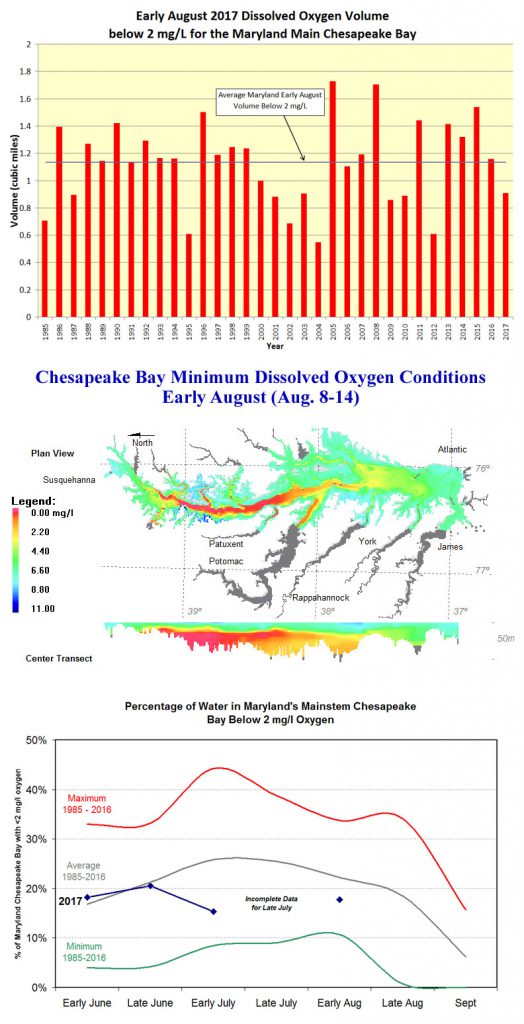Early August 2017 Hypoxia Report

photo by by Krystle Chick
Dissolved oxygen conditions in Maryland’s portion of the Chesapeake Bay mainstem were much better than average for early August, reports the Maryland Department of Natural Resources.
The hypoxic water volume (areas with less than 2 mg/l oxygen) was 0.91 cubic miles, which is much smaller than the early August 1985-2016 average of 1.31 cubic miles. No anoxic zones (areas with less than 0.2 mg/l oxygen) were detected.
Crabs, fish, oysters and other creatures require oxygen to survive with levels above 5 mg/l considered optimal to support aquatic health.
The better-than-average conditions follow similar results from early July. While hypoxic volume estimation was not available for late July, conditions could be more favorable due, in part, to lower than average temperatures in the week leading up to sampling. Higher temperatures generally cause more stratification of the water column, which inhibits oxygen from mixing into deeper waters. Waters with higher temperatures also hold less oxygen.
In the beginning of June, the National Oceanic and Atmospheric Administration, U.S. Geological Survey, University of Maryland Center for Environmental Science and University of Michigan scientists predicted a slightly larger than average hypoxic volume for the bay due to higher spring flows (January-May) and nitrogen loading from the Susquehanna River.
Scientists and natural resource managers study the volume and duration of bay hypoxia to determine possible impacts to bay life. Each year (June-September), the department computes these volumes from data collected by Maryland and Virginia monitoring teams. Data collection is funded by these states and the Environmental Protection Agency’s Chesapeake Bay Program. Monitoring and reporting will continue with late August and September reports.
More information on Maryland’s Chesapeake Bay water quality monitoring program and results can be found here.


 1-888-373-7888
1-888-373-7888 233733
233733